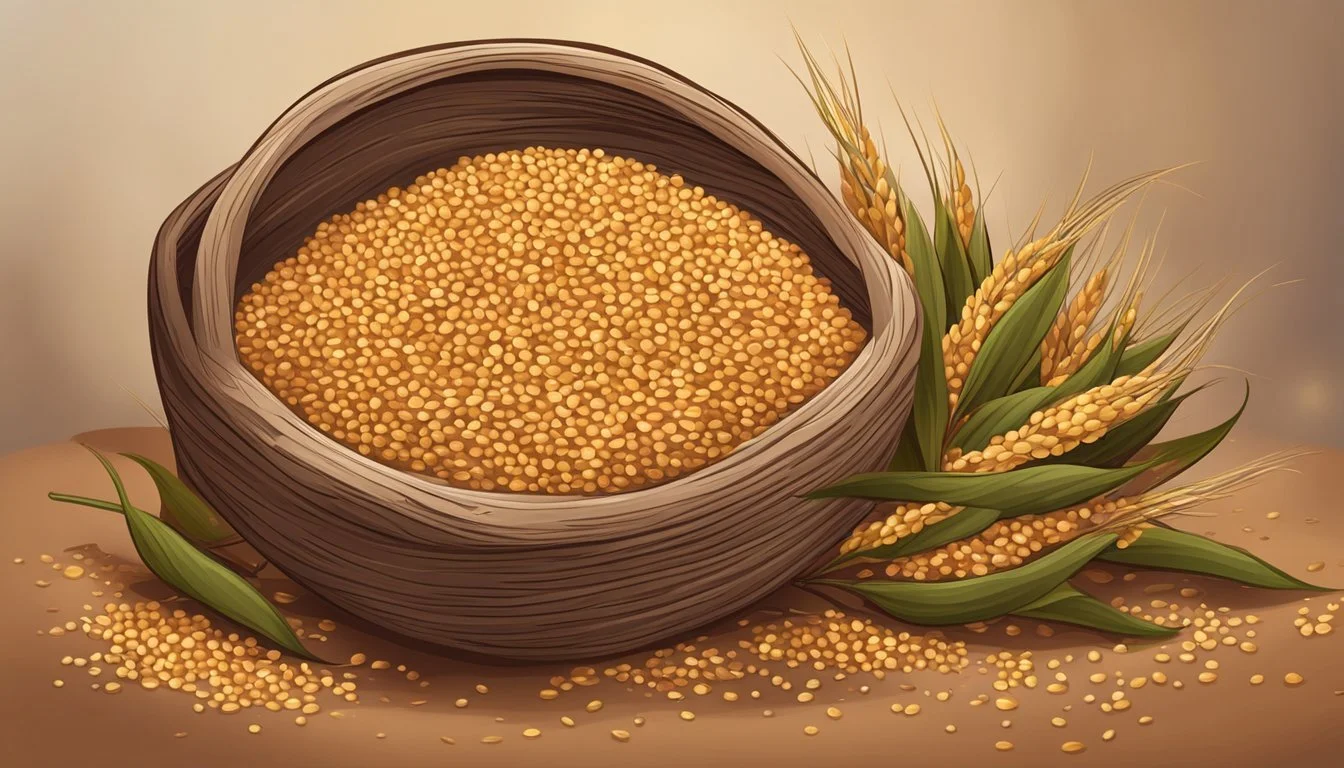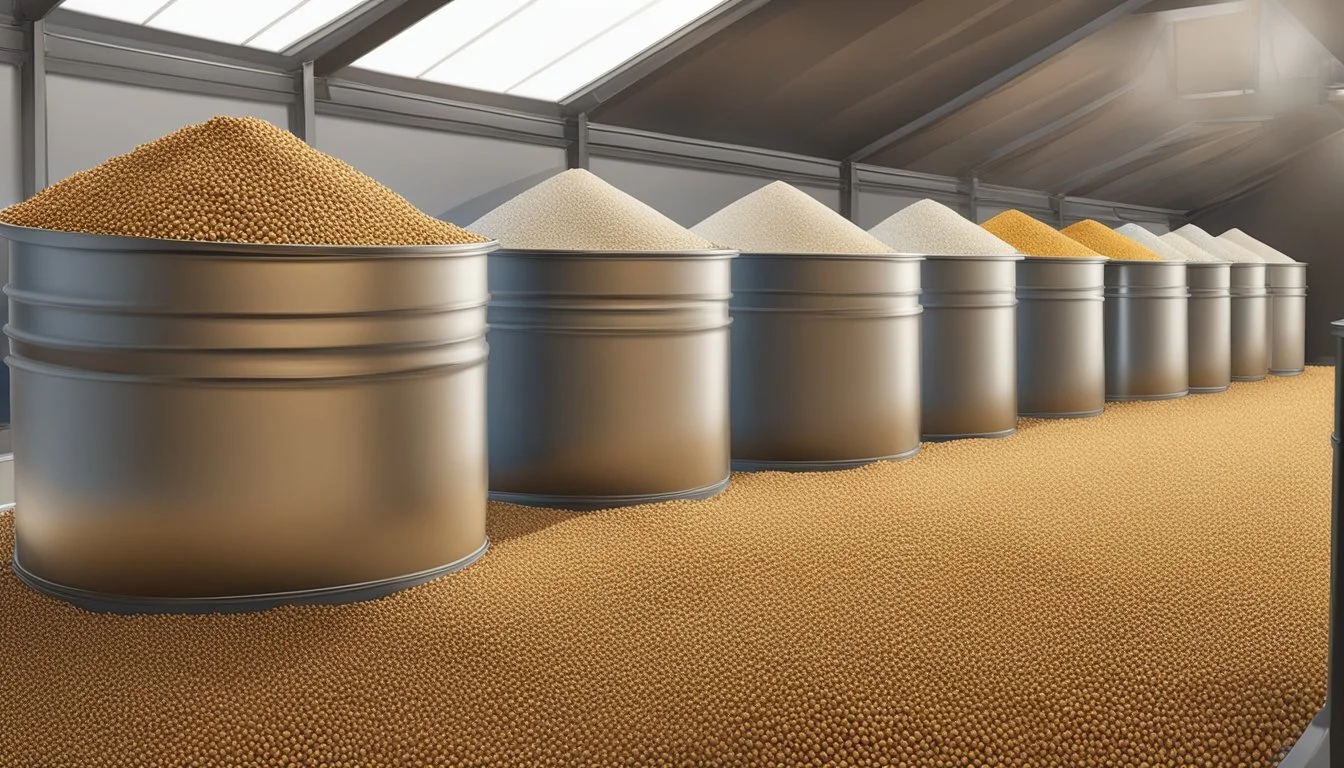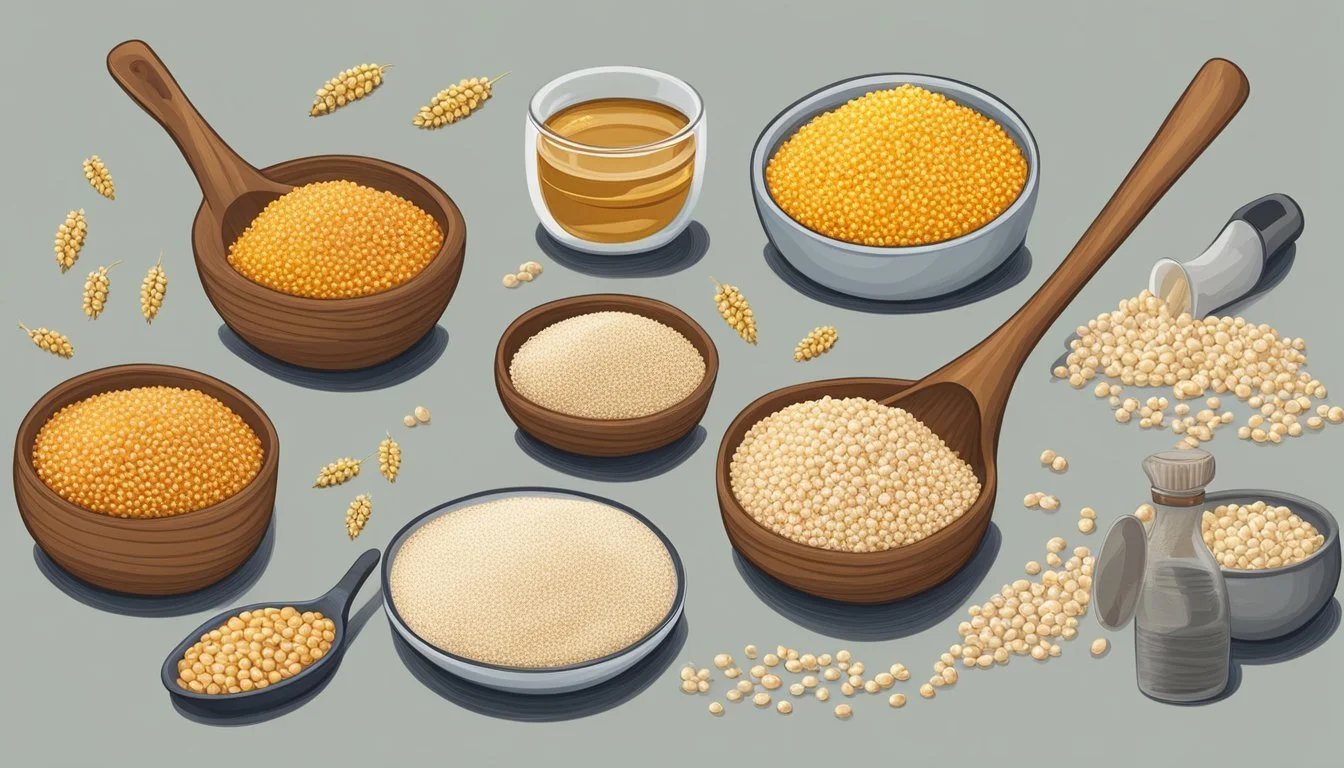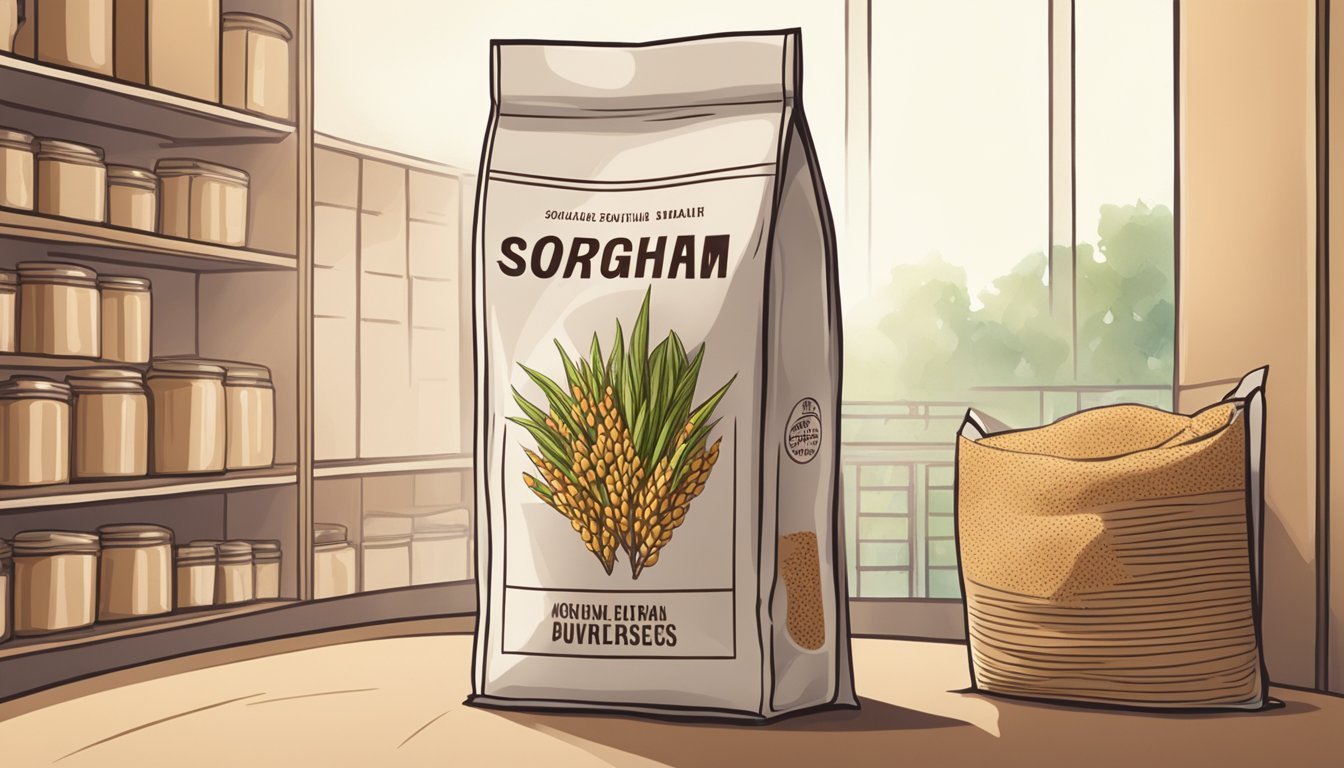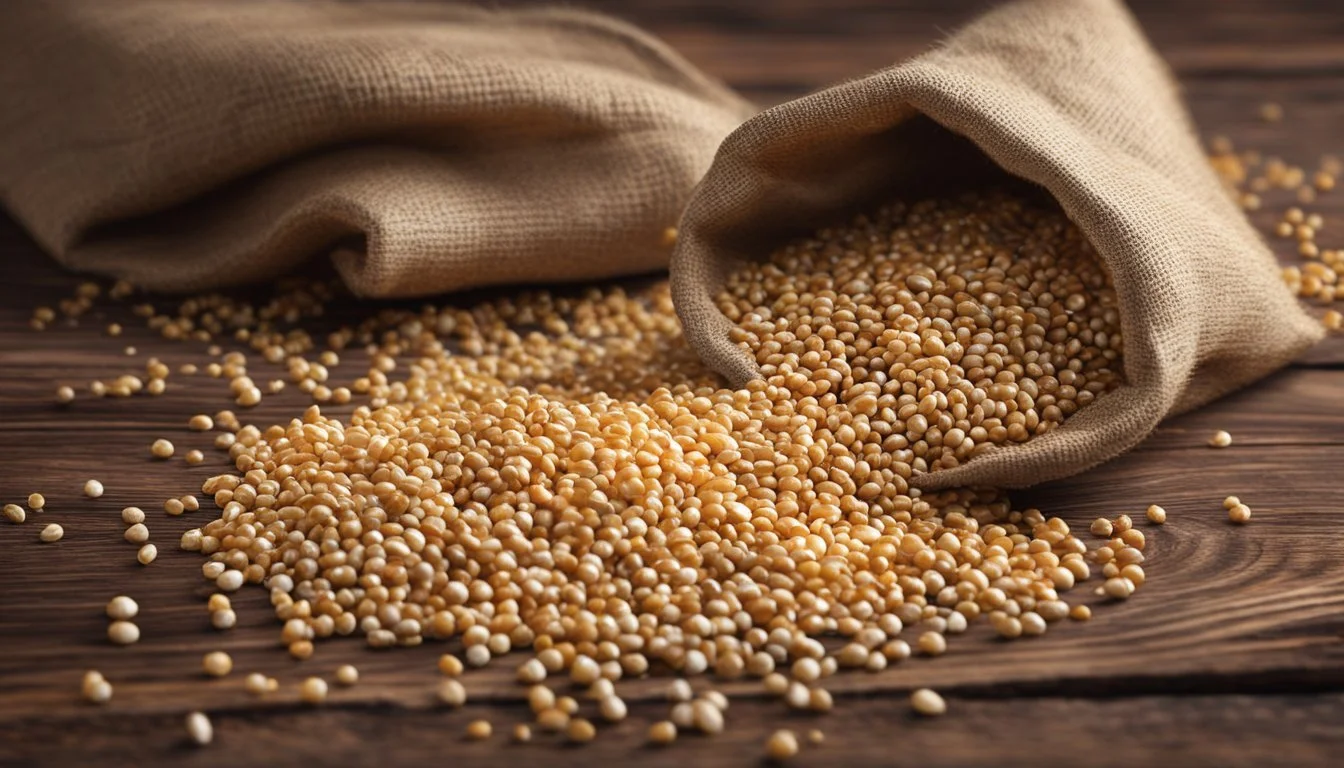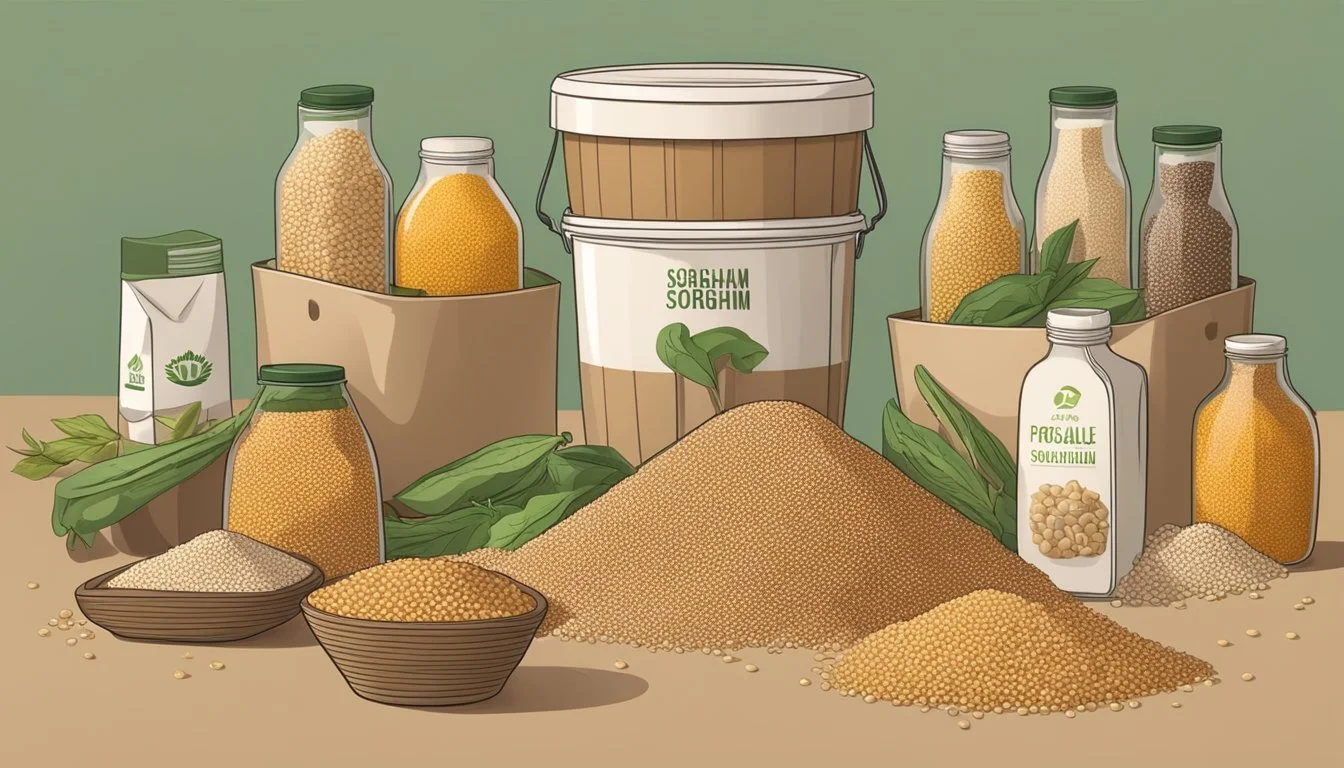Does Sorghum Go Bad?
Shelf Life and Storage Tips
Sorghum, an ancient grain, is becoming increasingly popular due to its versatility and nutritional benefits. But a common question arises: does sorghum go bad? Sorghum, when stored properly, can last up to 2 years in a cool, dry place.
The shelf life of sorghum depends on storage conditions. Proper packaging and keeping it away from moisture and pests are crucial. If sorghum emits a rancid or off odor, or if mold appears, it is a sign that it has spoiled.
Sorghum flour, another popular form, typically lasts about six months when stored correctly in a sealed container. Knowing how to store sorghum effectively can help maintain its flavor and nutritional value, making it a valuable addition to any pantry.
Understanding Sorghum
Sorghum is a versatile grain with a rich history, diverse nutritional profile, and various culinary applications. It is an excellent gluten-free alternative for those with dietary restrictions.
Origin and Varieties
Sorghum is an ancient grain tracing its origins to Africa, where it has been cultivated for thousands of years. The grain has since spread globally, with significant cultivation in the United States, India, and China.
There are different types of sorghum, including grain sorghum and sweet sorghum. Grain sorghum is typically used for food, while sweet sorghum is used to produce syrup. The adaptability of sorghum makes it a valuable crop in arid regions.
Nutritional Profile
Sorghum is packed with dietary fiber, protein, and antioxidants. It’s an excellent source of iron, essential vitamins and minerals, and contributes to overall digestive health. Each serving provides considerable amounts of B vitamins, particularly niacin, riboflavin, and thiamine.
The grain's comprehensive nutrient profile makes it a valuable food for maintaining a balanced diet. Sorghum is also low in fat, making it suitable for individuals seeking to manage their weight.
Culinary Uses
In cooking, sorghum is diverse. It can be used in whole form in soups and stews, milled into flour for baked goods like cakes and pancakes, or turned into syrup for sweetening recipes. Its neutral flavor makes it adaptable to a variety of dishes.
Sorghum flour is increasingly popular in gluten-free baking. Because it can mimic the texture of wheat flour, it is ideal for those with celiac disease or gluten intolerance. Sorghum's high fiber content also brings added health benefits to recipes.
Sorghum as a Substitute
Given its nutrient density and gluten-free nature, sorghum is often used as a substitute in recipes. Sorghum flour can replace wheat flour, altering the flavor only slightly while providing a smooth, moist texture to baked goods.
Sorghum can also substitute oats in gluten-free alternatives, adding a similar texture with enhanced nutritional benefits. This grain serves as a versatile ingredient, ideal for creating gluten-free versions of a wide range of dishes, ensuring those with dietary restrictions can enjoy their favorite foods.
Storing Sorghum
Proper storage of sorghum is crucial to maintaining its quality and extending its shelf life. Key factors such as temperature, moisture control, and the use of airtight containers significantly affect its longevity.
Ideal Storage Conditions
Sorghum should be stored in a cool, dry place to prevent spoilage. The optimal storage temperature ranges between 50-60°F (10-15°C).
Moisture and humidity are major concerns, as they can quickly lead to spoilage. Keep sorghum in an area with low humidity and away from direct sunlight and heat sources, which can degrade its quality.
An airtight container is essential to maintaining dryness and freshness, and can help to keep out pests. The pantry is often an ideal location due to its controlled environment.
Shelf Life Determinants
The shelf life of sorghum varies based on several factors. In its grain form, sorghum can last up to 2 years when stored under optimal conditions.
Factors such as exposure to moisture, air, and pests can reduce its shelf life considerably. Sorghum flour, in particular, has a shorter shelf life of about six months, owing to its finer consistency and greater surface area exposed.
Consumers should check for signs of spoilage such as changes in color, texture, and odor to ensure the product is still good for consumption.
Extended Preservation
For extended preservation, freezing and refrigeration are effective methods. Freezing sorghum grains or flour can significantly extend their shelf life, sometimes beyond the typical 2 years.
Refrigeration can also help, especially if storage conditions are not ideal. Ensure containers are tightly sealed to prevent moisture from entering.
Labeling containers with purchase and expiration dates can offer better inventory management, ensuring older products are used first to maintain freshness. Using these methods can ensure that sorghum remains fresh and of high quality for as long as possible.
Identifying Spoiled Sorghum
Assessing whether sorghum has gone bad involves inspecting its visual appearance, smelling for off odors, and noting any changes in flavor. Being able to recognize these signs ensures the grain remains safe for consumption.
Visual and Textural Changes
When sorghum spoils, several visual and textural changes occur. Discoloration is a key indicator. Fresh sorghum grains typically have a consistent color, and any dark spots or deviations may signify spoilage.
Mold growth can appear as fuzzy patches, indicating the presence of harmful bacteria. Additionally, a change in texture—such as becoming excessively hard or mushy—can also signal that the sorghum is no longer safe to eat. These changes are often due to exposure to moisture or poor storage conditions.
Odor and Flavor Indicators
Spoiled sorghum frequently emits off smells. A fresh batch of sorghum has a mild and neutral aroma. A sour, rancid, or musty odor suggests spoilage due to bacterial contamination.
When assessing flavor, any unusually bitter or sour taste can indicate that the sorghum has gone bad. Such changes in odor and flavor are crucial flags, as consuming spoiled sorghum poses health risks.
Health Implications
Eating spoiled sorghum can lead to serious health issues. Bacterial growth, indicated by mold or off smells, can cause food poisoning, presenting symptoms such as vomiting, diarrhea, and abdominal pain.
Spoiled grains can harbor mycotoxins, toxic substances produced by mold, posing long-term health risks. To avoid these dangers, it is vital to discard any sorghum with signs of spoilage and ensure it is stored properly in a cool, dry place.
Sorghum in Different Forms
Sorghum can be found in various forms, each offering unique benefits and storage requirements. Understanding the different forms of sorghum—whether whole grain, flour, or as a sweetener—can help users maximize its shelf life and potential uses.
Whole Grain and Flour
Whole grain sorghum is known for its impressively long shelf life. When stored in a cool, dry place, it can last up to two years. The key is to keep it free from moisture and pests. Whole grain sorghum can be eaten whole or popped like popcorn, offering a versatile and nutritious option.
Sorghum flour, however, has a shorter shelf life, generally up to six months when stored in an airtight container in a cool, dry place. Fresh sorghum flour should have a fine, pale cream color and a neutral, slightly sweet aroma. Dark spots, an off-white hue, or a sour smell indicate spoilage and should be discarded.
Processed Products
Sorghum is also available in various processed forms, each with different storage needs and uses. Sorghum syrup and molasses are popular sweeteners derived from sorghum. When unopened, these products can last for several years if stored in a cool, dry place. Once opened, the shelf life decreases, and it's recommended to keep them tightly sealed to prevent moisture intrusion.
Additionally, sorghum is used in products like cereals, snacks, and even beer, leveraging its versatility. These products should always be stored as directed on their packaging to maintain their quality and freshness. Paying attention to expiration dates and signs of spoilage is essential.
Sorghum as Sweetener
Sorghum syrup, similar to honey and maple syrup, is a popular natural sweetener with an extended shelf life. Unopened sorghum syrup can last for years in a cool, dry place. Once opened, it should be kept tightly sealed to avoid moisture and contamination.
Sorghum molasses, thicker and darker than syrup, shares similar storage guidelines. Both forms of sorghum sweetener offer a robust flavor, making them excellent for baking and cooking. Their longevity and natural sweetness make them a valuable addition to any pantry.
Practical Tips and Tricks
Proper storage and careful handling can significantly extend the shelf life of sorghum. The key areas to focus on include labeling, pest management, and moisture control.
Proper Labeling
Proper labeling helps keep track of expiration dates and ensures rotational use. Always label containers with the date the sorghum was stored. Using a simple table like the one below can help:
Batch Date Expiration Date Notes 06/12/2024 06/12/2026 Sealed container
Marking the date helps in using the first-in, first-out method, reducing the risk of consuming spoiled grains. Labels should be clear and water-resistant to avoid smudging.
Dealing with Pests
To prevent pests such as bugs from attacking the sorghum, use airtight containers for storage. Glass or plastic containers with rubber seals work well. Keeping the storage area clean and free from food residues also minimizes the risk.
If pests are detected, immediately discard the affected batch and thoroughly clean the storage container. Freezing sorghum for a few days before long-term storage can also kill any potential pests.
Moisture Management
Managing moisture is crucial to prevent spoilage. Store sorghum in a cool, dry place to minimize exposure to humidity. Avoid areas prone to condensation like kitchens and bathrooms.
Using silica gel packets in storage containers can help absorb excess moisture. Also, ensure containers are tightly sealed after each use to keep humidity at bay. Regularly check for signs of moisture, such as clumping or odd smells, and address any issues immediately.
Sorghum Beyond Cooking
Sorghum's versatility extends beyond culinary uses. Its applications in brewing and industry, as well as its critical role in agriculture, highlight its significance in various fields.
Brewing and Industrial Use
Sorghum is a key ingredient in brewing, especially in gluten-free beers. It serves as a substitute for barley, providing a unique flavor and maintaining the quality of the brew.
In industrial use, sorghum's biomass is valuable for biofuel production. It offers a renewable energy source, aiding in creating ethanol. This use has gained attention as efforts to find sustainable energy solutions intensify.
Furthermore, sorghum's fiber is utilized in producing biodegradable packaging and building materials. This highlights its potential in reducing reliance on non-renewable resources.
Agricultural Significance
Sorghum is drought-resistant, making it an essential crop in arid regions. Its ability to thrive in harsh conditions ensures food security and supports local economies.
The crop is vital for animal feed due to its high nutritional value and low water requirements. Farmers rely on sorghum to sustain livestock during periods of drought, thereby maintaining food supply chains.
Additionally, sorghum aids in sustainable farming practices. Its deep root system helps prevent soil erosion and maintains soil health, contributing to long-term agricultural productivity.
Overall, sorghum's role extends far beyond cooking, proving beneficial in diverse sectors, including brewing, industry, and sustainable agriculture.
Sustainable Consumption
Sorghum is a versatile whole grain that offers numerous benefits for sustainable agriculture and economic viability. It plays a critical role in sustainable diets and has important economic implications for various regions worldwide.
Sorghum in Sustainable Diets
Sorghum is an environmentally friendly crop that requires fewer inputs such as water and fertilizers compared to other cereals like wheat and rice. Its resilience to harsh climates makes it an ideal candidate for sustainable agriculture, especially in regions facing water scarcity and poor soil conditions.
Incorporating sorghum into diets can contribute to food security and provide essential nutrients. Sorghum is high in fiber, protein, and antioxidants, making it a nutritious addition to meals. Additionally, this whole grain can be used in various culinary applications, from bread and porridges to beverages and snacks.
By promoting the consumption of sorghum, there can be a reduction in the environmental impact associated with farming more resource-intensive crops. As a staple in many parts of Africa and Asia, increasing its global consumption can help diversify diets and promote sustainability in food systems.
Economic Considerations
The economic benefits of sorghum cultivation are significant. Due to its low input requirements, farmers can achieve cost savings and better yields under challenging conditions. This makes sorghum an economically attractive crop for smallholder farmers and larger agricultural enterprises alike.
Sorghum's versatility extends to its market potential. It can be processed into various products, including flour, syrups, and even biofuels. The demand for these products can drive economic growth in rural areas, providing jobs and enhancing livelihoods.
By focusing on sorghum as a sustainable agricultural product, policymakers can support efforts to alleviate poverty and promote economic stability. Investment in research and development for sorghum-based innovations can further enhance its economic viability and environmental benefits.
The Market for Sorghum
Sorghum, both in its grain and flour forms, plays a significant role in various markets due to its versatility and nutritional benefits. The buying habits, available brands, and the influence of affiliate marketing are crucial factors for consumers and businesses alike.
Buying and Brands
Sorghum can be purchased in several forms, including whole grains, flour, and processed products. Popular brands include Bob's Red Mill, Arrowhead Mills, and Nu Life Market. These brands offer a range of sorghum products that cater to consumers looking for gluten-free options or those interested in diverse, nutritious grains.
Retail availability is widespread, with sorghum products found in health food stores, major grocery chains, and online platforms like Amazon. Quality and price are primary considerations, with organic options typically commanding higher prices. Consumers should review labels for information on sourcing and certifications to ensure they meet their dietary preferences and needs.
Affiliate Marketing and Sorghum
Affiliate marketing has a pronounced impact on sorghum sales, particularly online. Bloggers, food influencers, and health websites often use affiliate links to promote sorghum products. When consumers click these links and make purchases, the affiliate earns a commission, incentivizing more content creators to feature sorghum in their recipes and health advice.
This marketing strategy boosts awareness and drives sales. Affiliates help educate consumers about sorghum’s benefits, contributing to its growing popularity. Brands frequently collaborate with influencers to increase their market reach, utilizing dedicated campaigns that highlight the grain's unique properties and versatile uses in modern diets.

